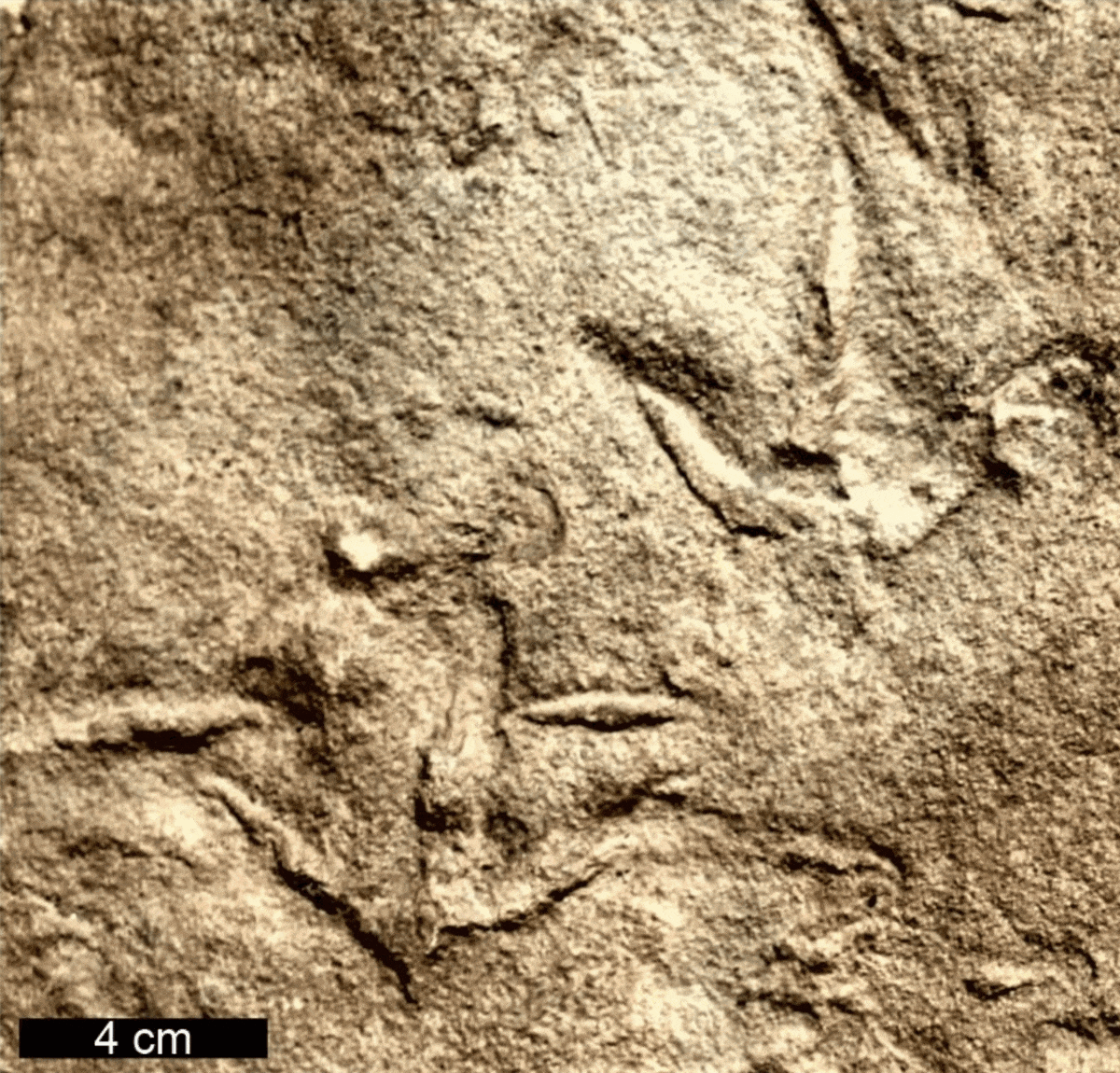Paleontologists
11-Year-Old Uncovers Fossils of Giant Ichthyosaur in England, the Largest Marine Reptile Ever Found, Scientists Say
The jawbone fragments belonged to an 82-foot-long creature that represents a new species, according to a new study
You Can Visit the World's Largest Continuous Dinosaur Trackway, Now on Protected Public Land
In the Late Jurassic, a long-necked dinosaur made a 270-degree turn while walking in present-day Colorado—and left behind a rare treat for paleontologists
New Extinct Species of Giant Dolphin Discovered in Peru From a 16-Million-Year-Old Skull
Pebanista yacuruna is the largest freshwater dolphin ever found, but it is more closely related to today's river dolphins of South Asia than those in the Amazon
Why Did Seals and Sea Lions Never Commit to a Life Fully at Sea?
While whales moved from living on land to an existence immersed in water, pinnipeds embraced an amphibious lifestyle
Fossil Hunter Discovers Gigantic Crab in New Zealand—a New, Extinct Species
The massive creature is 8.8 million years old, and its modern descendants in Australia can grow to be the weight of a human toddler
Paleontologists Are Still Unraveling the Mystery of the First Dinosaur
Two hundred years after it was first named, scientists are just beginning to reveal the secrets of Megalosaurus
Uncovering the Secrets of Colombia's Rich Fossil Deposits
Paleontologists are working hard to understand oceanic remains buried high in the Andes
Newly Discovered, Parrot-Like Dinosaur Roamed North America Alongside T. Rex
While larger dinosaurs are comparatively well-known, finding smaller species paints a more complete picture of life before the mass extinction
Was Megalodon Slimmer Than Previously Thought?
A new study has spurred scientists to debate the shape of prehistory’s biggest shark
Meet Elma, a Woolly Mammoth Who Roamed Far and Wide More Than 14,000 Years Ago
By analyzing a fossilized tusk, scientists have pieced together the animal's movements
Miners Discover Seven-Foot Mammoth Tusk in North Dakota
After coal mine workers found the 50-pound specimen, paleontologists studied the site and uncovered more than 20 additional bones
This 288-Million-Year-Old Fossilized Scrap of Skin Is the World's Oldest
The remains, found in an Oklahoma cave, belonged to a lizard-like reptile
Decades-Long Debate on 'Teenage' Tyrannosaur Fossils Takes Another Turn
A new paper adds to evidence suggesting a group of disputed fossils, identified by many scientists as young T. rex, are actually another species
The Ten Most Significant Science Stories of 2023
From an asteroid sample that was delivered to Earth to a discovery about human migration from North America, these were the biggest moments of the year
The Top Ten Dinosaur Discoveries of 2023
From uncovering a tyrannosaur’s last meal to unlocking the secrets of a dino with a really long neck, these were the year’s biggest stories
Amazing Fossil Preserves Teenage Tyrannosaur’s Last Meal
Stomach contents from a juvenile Gorgosaurus reveal it feasted on small, bird-like species 75 million years ago
Mysterious Creatures With Bird-Like Feet Made These Tracks Long Before Birds Evolved
The footprints pre-date the earliest known fossils of avian ancestors by roughly 60 million years, per a new study
Australia's Oldest Known Bird Tracks Are 120 Million Years Old
In that age, the continent was attached to Antarctica, but migrating animals still traveled to the polar region for sustenance
Ancient Whales Were the Biggest and Smallest of Their Kind to Ever Roam the Oceans
New discoveries show how whale diversity exploded after the dinosaurs disappeared
These Large, Flesh-Eating Lampreys Lived 160 Million Years Ago
Paleontologists in China recently unearthed the fossilized remains of two new species of lamprey, a group of jawless fish that dates back 360 million years
Page 1 of 21
:focal(580x331:581x332)/https://tf-cmsv2-smithsonianmag-media.s3.amazonaws.com/filer_public/88/89/88898df1-21bb-4694-bb18-1002084963cf/ichy2.webp)
:focal(2722x1815:2723x1816)/https://tf-cmsv2-smithsonianmag-media.s3.amazonaws.com/filer_public/e9/4e/e94e8134-db25-4719-a364-98b1e5f2ee49/fseprd1171522.jpg)
:focal(760x480:761x481)/https://tf-cmsv2-smithsonianmag-media.s3.amazonaws.com/filer_public/d0/3e/d03e928c-6c7c-4f9a-b920-0e34f5618f38/article_giant_freshwater_dolphin_1.jpg)
:focal(800x602:801x603)/https://tf-cmsv2-smithsonianmag-media.s3.amazonaws.com/filer_public/3a/fb/3afb3353-3a1b-4314-a0ee-93d37a1d9b66/gettyimages-1246951746_web.jpg)
:focal(710x469:711x470)/https://tf-cmsv2-smithsonianmag-media.s3.amazonaws.com/filer_public/c4/08/c40878e0-e98d-4124-b364-4911b87266ad/fossil-unearthed-in-ne.jpg)
:focal(800x602:801x603)/https://tf-cmsv2-smithsonianmag-media.s3.amazonaws.com/filer_public/08/82/0882d8ae-c6ef-4900-842d-2560066a35f4/gettyimages-89165747_web.jpg)
:focal(800x602:801x603)/https://tf-cmsv2-smithsonianmag-media.s3.amazonaws.com/filer_public/c1/1c/c11c3e9f-d10f-45df-88e6-c835679a245e/header-uncropped-colombia-cretaceous-fossils_web.jpg)
:focal(800x602:801x603)/https://tf-cmsv2-smithsonianmag-media.s3.amazonaws.com/filer_public/a1/d6/a1d69c53-4367-4a5f-8a36-4e7650a73a16/journalpone0294901g010_web.jpg)
:focal(749x564:750x565)/https://tf-cmsv2-smithsonianmag-media.s3.amazonaws.com/filer_public/87/29/87290ba6-1553-4957-8822-a6a59657f5be/gettyimages-567419617_web.jpg)
:focal(512x341:513x342)/https://tf-cmsv2-smithsonianmag-media.s3.amazonaws.com/filer_public/d7/93/d7937ea8-25b4-42d5-976b-57dc156d80bc/karen-spaleta-sampling-swanpoint-mammoth-tusk-1-1024x682.jpg)
:focal(960x722:961x723)/https://tf-cmsv2-smithsonianmag-media.s3.amazonaws.com/filer_public/54/ce/54cea99b-456a-4de7-9cee-3d30837d6722/fmm_6-8-2023_05.jpeg)
:focal(800x602:801x603)/https://tf-cmsv2-smithsonianmag-media.s3.amazonaws.com/filer_public/a1/30/a130b8ef-033f-4a49-8780-341693394317/fossilized-skin_credit-current-biology-mooney-et-al.jpg)
:focal(350x230:351x231)/https://tf-cmsv2-smithsonianmag-media.s3.amazonaws.com/filer_public/fd/0b/fd0b31c6-07df-4c2b-b236-0bf9409effe2/low-res_nanotyrannus_versus_baby_t_rex_reduced.jpg)
:focal(800x602:801x603)/https://tf-cmsv2-smithsonianmag-media.s3.amazonaws.com/filer_public/bc/1a/bc1a8ce0-a261-43a8-b66a-0a2dfed17308/topsciencestories2023-v3_web.jpg)
:focal(800x602:801x603)/https://tf-cmsv2-smithsonianmag-media.s3.amazonaws.com/filer_public/8b/0e/8b0ef95c-1c54-4edf-a049-1729608d5f2c/topdinos2023-v2.jpg)
:focal(709x533:710x534)/https://tf-cmsv2-smithsonianmag-media.s3.amazonaws.com/filer_public/c3/42/c342a24b-02a4-47b5-be7d-0b14dfc10ab8/16-gorgosaurus-consumption-artist-julius-csotonyi-copyright-royal-tyrrell-museum-of-palaeontology_web.jpg)

:focal(754x567:755x568)/https://tf-cmsv2-smithsonianmag-media.s3.amazonaws.com/filer_public/b3/f0/b3f07d9c-0644-48a2-8c37-c1f24a2ddb9c/ff-1-3_web.jpg)
:focal(800x602:801x603)/https://tf-cmsv2-smithsonianmag-media.s3.amazonaws.com/filer_public/10/a7/10a703a6-4837-4662-8ca6-9c6f70d91f03/gettyimages-89172621_web.jpg)
:focal(1280x719:1281x720)/https://tf-cmsv2-smithsonianmag-media.s3.amazonaws.com/filer_public/4d/bc/4dbcf28c-1a83-4a52-9974-af75be680f0d/2.jpeg)